Serverless computing has established itself in mainstream adoption and started appearing in the technology roadmap for enterprise organizations. Research companies and industry leaders have predicted that serverless adoption will gain more momentum in 2022. While there are different aspects of Serverless in context to infrastructural elements such as storage, compute and network, this article focuses on the latest trends in serverless application development.
With an increasing focus to offload operations aspects to cloud-service providers or platform-centric solutions, serverless architecture will continue to play a pivotal role in microservices application development as a Function-as-a-Service (FaaS) style of programming (see below diagram). The latest trends in serverless application development will continue to evolve with new emerging patterns, technology offerings, and innovation by the cloud-native community.
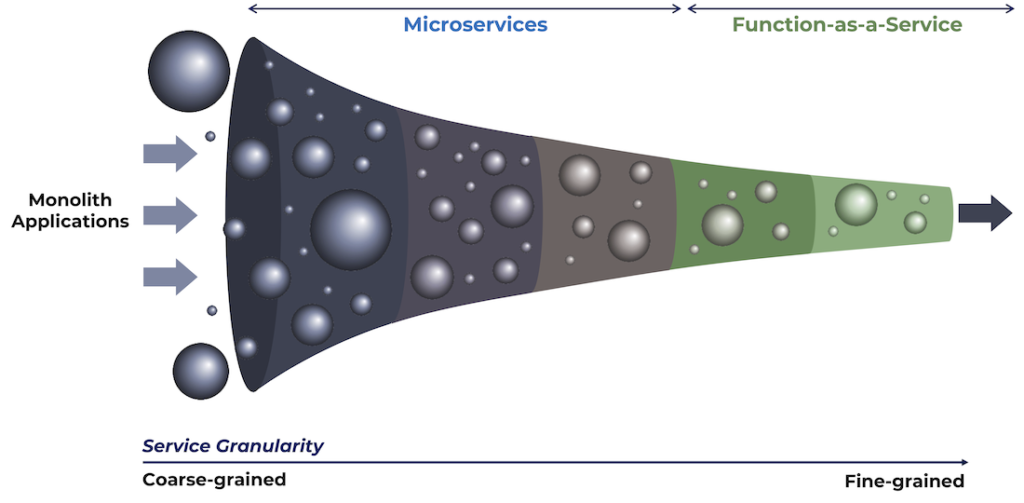
Serverless computing is a key technology that is redefining the way enterprises build, consume and integrate cloud-native applications. “Serverless architectures enable developers to focus on what they should be doing — writing code and optimizing application design — making way for business agility”
— CIO’s Guide for Serverless Computing by Gartner
Trend #1 — Abstraction is the new mantra in serverless application development
The serverless architecture has popularized a FaaS style of programming among developers; it helps developers focus on solving core business problems with independently built and deployed functions that react to an event, run a business process, produce other events in the process and scale down to zero.
— ThoughtWorks Technology Radar
- Historically serverless offering has been popularized by serverless platforms such as AWS Lambda, Microsoft Azure Functions, Google Cloud Functions, Alibaba Cloud Function Compute, and other cloud providers. These platforms provided abstraction over core infrastructure and integrates natively with cloud-managed services.
- With the rise of multi-cloud deployment, the next trend is an evolution towards building an abstraction layer (see diagram below) on top of offerings by public cloud service providers. This will help decouple business services from cloud vendors’ proprietary technology and flexibility in choosing the provider of a Serverless platform as per service-specific requirements.
- Providing a serverless application development layer as another abstraction layer helps the application development lifecycle by providing a vendor-neutral interface in building function-as-a-service based applications.
- Organizations either have a platform engineering team building a serverless application development layer or using out-of-the-box solutions.
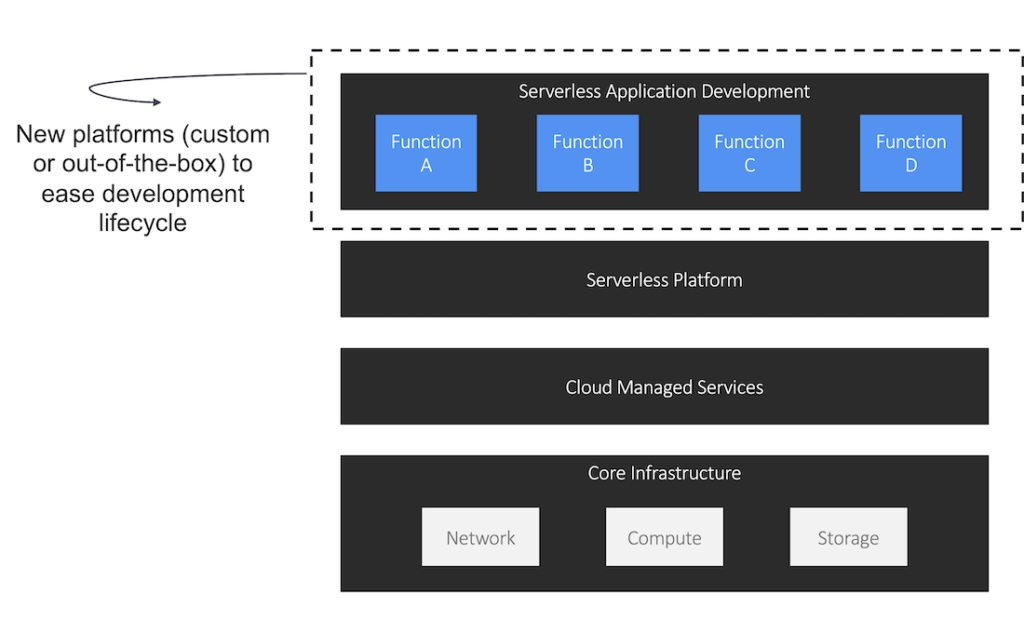
Trend #2 — Containers and serverless as a foundational platform
Containers & Serverless will become an infrastructure foundation for application platforms.
— Gartner’s 2022 Planning Guide for Cloud & Edge Computing
- Containers are considered more coarse-grained in comparison to Serverless Functions and are treated as an alternative choice.
- The recent trend is the combination of the power of both the worlds as Serverless platforms have started supporting Containers to package and deploy the application code (see table below for key serverless vendors and their support for containers).
Trend #3 — Rise of opensource in building serverless platform
Open source cloud native development battles target service meshes and serverless.
— Forrester Research
- While AWS Lambda uses its proprietary technology for Serverless, emerging players are using Opensource technology to build Serverless platforms.
- This helps in differentiating their capabilities as vendor-neutral and their inclination towards being more open and transparent. Additionally, in the case of the hybrid-cloud deployment model, it helps to establish a consistent approach for on-premises Serverless platforms using the same opensource technology.
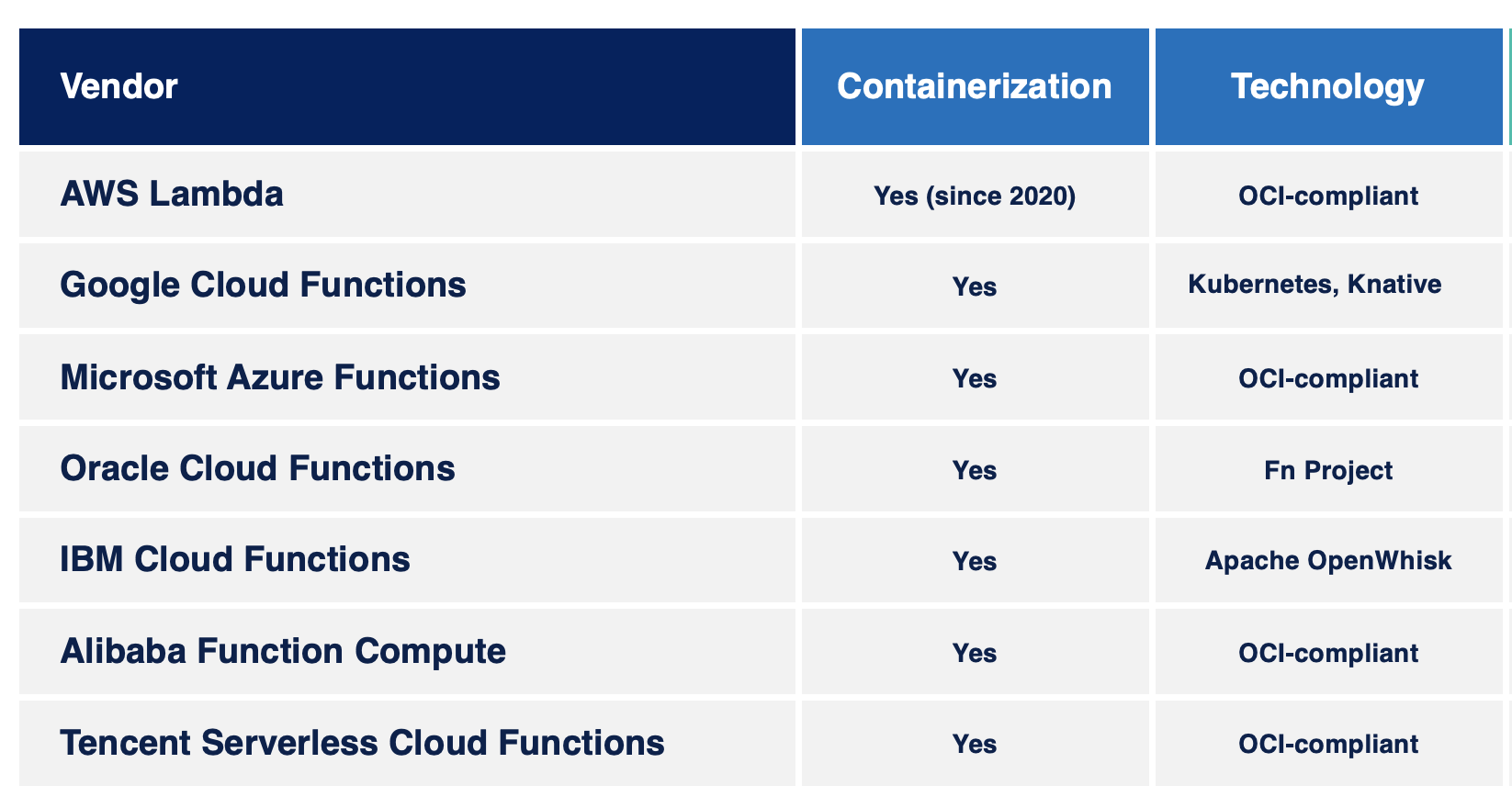
- Capabilities related to observability are also being widely integrated by Serverless platforms — OpenTracing, OpenTelemetry, Grafana, and Jaeger.
- Opensource provides many alternatives to having an enterprise-wide hybrid-cloud platform for serverless. Key frameworks are — Apache OpenWhisk, OpenFaaS, Knative, Fn project, Kubeless (archived by VMWare), and Fission.

Trend #4 — Serverless as an enabler for end-to-end application development platform
We predict 2022 is the year that Serverless finally reaches critical mass, approaching mainstream acceptance as the best practice model for how software development is done now.
— InfoQ Trends Report 2021
- Not only key cloud service providers (AWS, Azure & Google Cloud) are driving the adoption, but also new players are simplifying Serverless adoption. Interestingly, most of these players might be using public cloud service providers behind the scenes or allowing end-users to choose the provider by adding the abstraction layer on top of the providers.
- Similar to 2021, this year will continue to see new launches such as — AWS extended SAM platform (new capabilities like SAM Accelerate), Azure extending its Servlerss platform, and Cloudflare extending Servless capabilities like Workers and Pages for JAMStack.
These are key observations indicating the trend that technology service providers providing capabilities such as databases, application frameworks, GraphQL, etc. are focusing on launching end-to-end application development platforms with Serverless offerings:
- Akka Serverless (launched in June 2021) — to build real-time applications using managed Serverless platform.
- MongoDB Realm (launched in June 2021) — to build apps powered by MongoDB database as an integrated platform.
- Nimbella Service Platform got acquired by DigitalOcean and they have announced to launch a Beta offering soon in 2022.
- Cloudflare provides serverless compute services via Cloudflare Workers and continuously builds new capabilities like Workers Durable Objects, generally available in 2021 for building stateful serverless applications.
Trend #5 — Serverless at the edge will bring compute closer to the end-user
Serverless Edge Computing platforms leveraging 5G/6G’s ms latencies and AI optimizations will facilitate a Cloud Continuum for remote applications.
– IBM Serverless Predictions
- Novel applications will start getting designed to leverage the compute, storage, and network capability at the edge. This will cover the entire life cycle of applications in the cloud/edge continuum.
- With decreasing latency (< 1–5 ms) using edge computing, the performance, scalability, and availability expectations from serverless applications will be higher. Bursty workloads (following a workload pattern to handle sudden and unexpected load spikes) will continue to be the execution trend for serverless applications.
Other interesting observations and findings
- AWS Lambda remains the most widely used function-as-a-service (FaaS) offering as per Datadog’s State of Serverless, IBM, and IEEE Research.
- Typical serverless applications use managed cloud services and trends indicate the usage in the following areas — cloud storage (61%), cloud database (~47%), and cloud messaging (~38%) as per research from a collection of 89+ applications by IEEE.
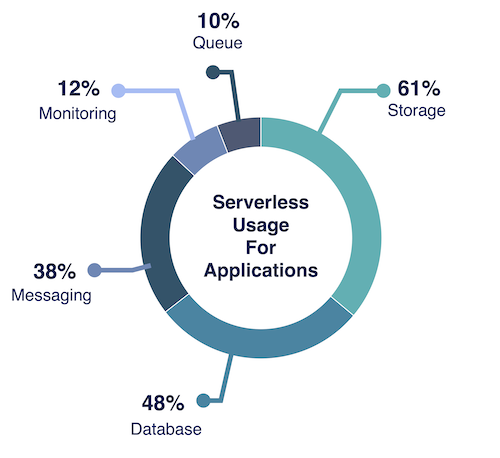
- Python and JavaScript are the most popular languages (~30–40%) for Serverless application development followed by Java (~10–15%), C/C++ (~10–15%), Golang (~4–5%), and Ruby (~1–2%).
- Serverless applications are majorly being used for APIs, stream/async processing, batch jobs, workflow processing, and operational tasks.
- The Serverless Framework is the leading way to deploy AWS Lambda applications with AWS CloudFormation followed by AWS Cloudformation, AWS CDK, AWS SAM
To conclude, Serverless will continue to be the focus area for cloud providers and these trends indicate that new & innovative offerings will continue to emerge in the areas such as — Function-as-a-Service, Backend-as-a-Service, Database-as-a-Service, Storage-as-a-Service, Kubernetes and Container Orchestration-as-a-Service, Machine-Learning-as-a-Service, and many more.
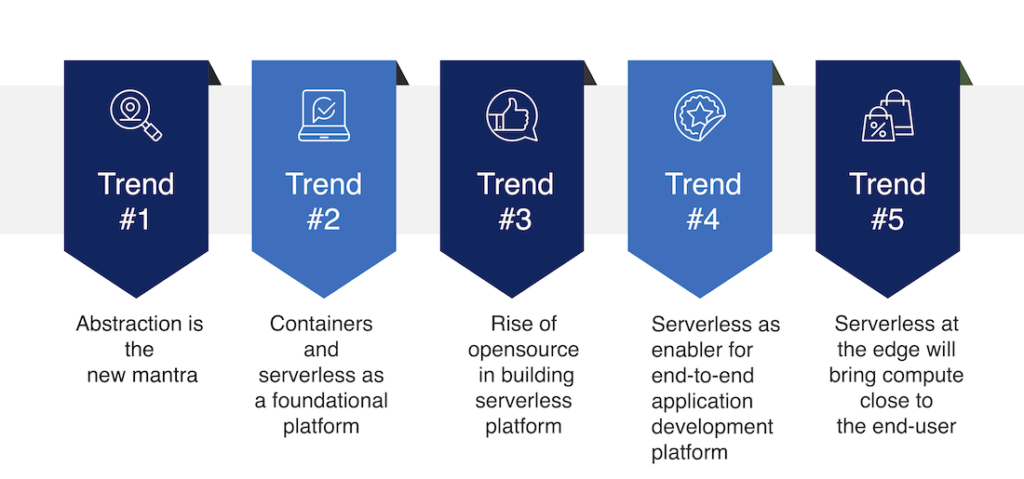
References:
- A year with serverless — BBC Online
- Top serverless frameworks to watch in 2021 (The Chief I/O)
- The State of Serverless (by Datadog)
- OWASP Serverless Top 10 Security Risks
- The Forrester Wave: Function-As-A-Service Platforms, Q1 2021
- A CIO’s Guide to Serverless Computing (Gartner)
